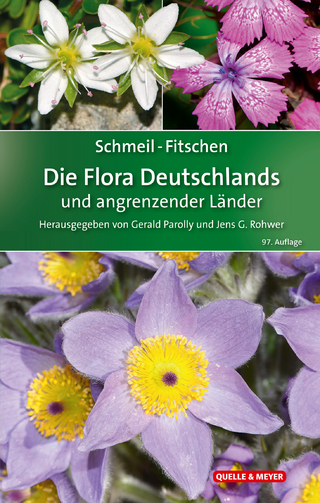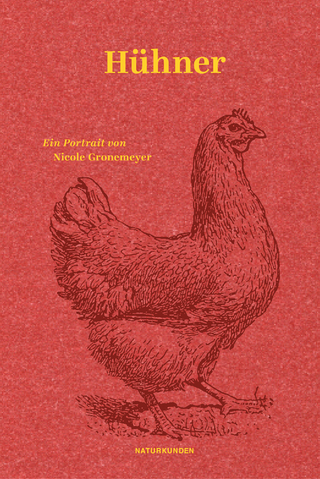
Butterfly Biology Systems
CABI Publishing (Verlag)
978-1-78924-357-4 (ISBN)
In Butterfly Biology Systems Roger Dennis explores key topics and contentious issues in butterfly biology, specifically those in life history and behaviour. Uniquely, using a systems approach, the book focuses on the degree of integration and feedback between components and elements affecting each issue, as well as the links between different issues. The book comprises four sections. The first two sections introduce the reader to principles and approaches for investigating complex relationships, and provide a platform of knowledge on butterfly biology. The final two sections deal in turn with life history and behaviour, covering key issues affecting different stages of development from eggs to adults. The book is extensively illustrated with original diagrams and models, all of which have detailed legends, produced to enhance a broader understanding, and to provide templates for future research. It includes a detailed bibliography and glossary providing an essential gateway to the extensive literature on butterfly biology. Butterfly Biology Systems is essential reading for graduate students and researchers in insect ecology, evolution, behaviour and conservation. It will also be of great value to anyone interested in butterflies. Introduces a systems approach to butterfly biology Includes succinct reviews of the key interrelationships in butterfly life history and behaviour Illustrates more than 100 models to advance research into butterfly biology systems
- Roger Dennis has spent 50 years researching into butterfly ecology, biogeography and conservation during which he has produced over 220 publications. His previous book on a 'Resource-based View for Conservation' received the British Ecological Society's Book of the Year in 2012. A Fellow of the Linnean Society and the Royal Entomological Society, he is currently an Honorary Research Fellow at the NERC's Centre for Ecology and Hydrology, Wallingford, and an Honorary Professor at Staffordshire University and at Oxford Brookes University.
SECTION A: LANGUAGE AND CONCEPTS OF SYSTEMS THEORY Chapter A1: Reality, abstractions and systems Chapter A2: Types of systems Chapter A3: Structure and relationship in systems Chapter A4: Systems’ states Chapter A5: Measurement of relationships in systems Chapter A6: Catering for taxa and phylogenies Chapter A7: Systematic reviews of research findings: meta-analysis and evidence-based programmes SECTION B: PERSPECTIVES ON BUTTERFLY BIOLOGY Chapter B1: Taxonomic constraints in biological systems Chapter B2: The time frame in butterfly biology systems Chapter B3: The space frame for butterfly biology systems Chapter B4: Habitat: the context for individuals and populations Chapter B5: The butterfly body frame: basic contrasts in butterfly biology Chapter B6: Trade-offs and regulation in butterfly biology Chapter B7: Model taxa Chapter B8: Butterfly databases Chapter B9: Basic connections and broad divisions in butterfly biology SECTION C: BUTTERFLY LIFE HISTORY – BASIC TRADE-OFFS IN REPRODUCTION, DEVELOPMENT AND SURVIVAL Chapter C1: Size, brood number and development: fewer large eggs or more small eggs? Chapter C2: Conundrum of larval growth: fast and small, slow and large, or neither? Chapter C3: Alternatives to continuous development: to stay and adjust or leave? Chapter C4: Single or gregarious living? Host drivers and taxon dependence Chapter C5: Conundrums in mating: when, how often and how long? Chapter C6: Income versus capital breeders: Invest now and pay later, or pay as you go? Chapter C7: Mechanisms for survival: an arsenal for all occasions Chapter C8: Mimicry: honest and dishonest signals of unpalatability Chapter C9: Mechanisms extending survival into exploitation Chapter C10: Adult lifespan: the implications of living for longer SECTION D: BUTTERFLY BEHAVIOUR – INTERACTIVE ADJUSTMENTS IN THE HABITAT Chapter D1: The context and dimensions for observing individual behaviour Chapter D2: Basking modes, heat and water balance: adjustments to abiotic conditions Chapter D3: Adult Feeding – refuelling strategies Chapter D4: Mate location – finding suitable mates Chapter D5: Courtship – doing the business Chapter D6: Roost and rest sites – taking a break Chapter D7: Egg laying – unloading the next generation Chapter D8: Larval feeding – body building under duress Chapter D9: Choosing pupation sites – selecting sites for the final transformation Chapter D10: Adult anti-predator behaviour – life and death in the habitat
| Erscheinungsdatum | 13.10.2020 |
|---|---|
| Verlagsort | Wallingford |
| Sprache | englisch |
| Maße | 189 x 246 mm |
| Gewicht | 1545 g |
| Themenwelt | Sachbuch/Ratgeber ► Natur / Technik ► Naturführer |
| Naturwissenschaften ► Biologie ► Zoologie | |
| ISBN-10 | 1-78924-357-2 / 1789243572 |
| ISBN-13 | 978-1-78924-357-4 / 9781789243574 |
| Zustand | Neuware |
| Haben Sie eine Frage zum Produkt? |
aus dem Bereich


